Cutting Through Police Propaganda in Baltimore
Most coverage of the protests this week failed to provide context or give voice to those protesting, instead offering a simplistic narrative of "school-age youths" assaulting police at Mondawmin Mall.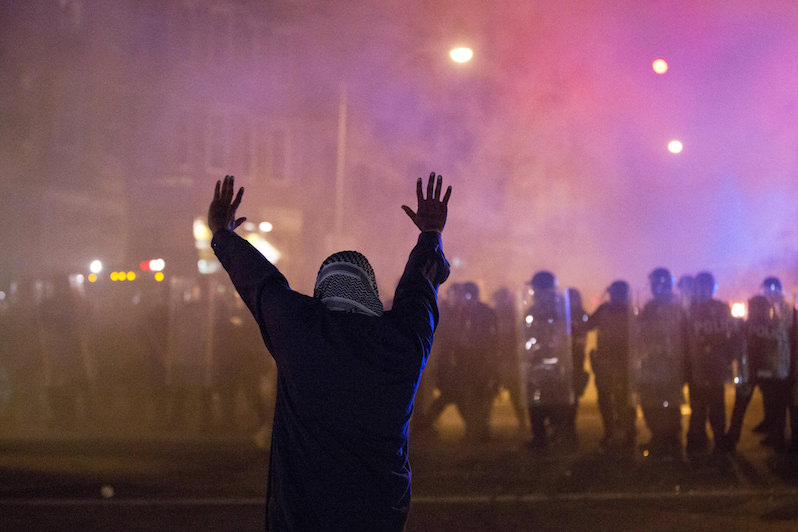 A protester faces Baltimore police officers enforcing a curfew Tuesday. (AP / Matt Rourke)
A protester faces Baltimore police officers enforcing a curfew Tuesday. (AP / Matt Rourke)
On Monday, the day 25-year-old Freddie Gray was laid to rest in Baltimore after fatal injuries sustained during an arrest, The Daily Beast reported that members of the Crips and Bloods had declared a truce and united to protest Gray’s death. Hours after the report was published, the Baltimore Police Department issued a press release citing a “credible threat” based on intelligence that “various gangs … have entered into a partnership to ‘take out’ law enforcement officers.” Later, gang members, upset that their truce had been spun by the police, told local NBC affiliate WBAL, “We did not make that truce to harm cops. … We’re not about to allow y’all to paint this picture of us. … We want justice for Freddie Gray.”
The WBAL report was so unusual that even the reporter admitted as much, saying in the beginning, “I’ve had a number of young people … stop me and say, ‘You really need to talk to us and you really need to get our voice heard,’ and I said, ‘You are absolutely right.’ ” Most of the media coverage of the protests that took place in Baltimore this week failed to provide context or give voice to those protesting, instead offering a simplistic narrative of “school-age youths” assaulting police officers at Mondawmin Mall. For example, this Washington Post article used the terms “mobs” and “looters” to describe students. But left out of mainstream media coverage was what Marshall “Eddie” Conway, a reporter for the alternative media outlet The Real News Network, told me in an interview on “Uprising” a day after the protests. Conway, a former Black Panther Party leader in Baltimore who spent a whopping 44 years in prison for a crime he did not commit, explained that, “They [the police] closed the [Mondawmin] shopping center down, then … they let a high school out, then they closed down public transportation. So the students were released from school but they could not get on the metro system to go home or to leave the area. So they were stuck in that area and then massive police presence pushed them down to another area.” That is when students began physically expressing their anger.
Conway’s version of events is corroborated by a report published in Mother Jones, another alternative media outlet, after the interview was broadcast. Based on eyewitness accounts, reporters concluded that police “did not allow the after-school crowd to disperse.” One parent posting on Twitter was quoted as saying, “If they would’ve let them children go home, yesterday wouldn’t have even turned out like that.” It appears as though police were itching to prove the veracity of the “credible threat” they had issued by provoking students.
It is through this lens that we ought to view the “riots” in Baltimore this week, and what transpired in Ferguson, Mo., last summer when white officer Darren Wilson did not face charges in the shooting death of Michael Brown. Police departments are struggling to prove that they are needed to combat violence and keep order. In fact, Baltimore has requested 5,000 more state law enforcement officers, in addition to the hundreds of National Guardsmen that are already in the area. If there is no violence from protesters, police simply create the conditions for violence, as this study by University of California, Berkeley researchers found last year.
Such police responses to the burgeoning anti-brutality movement are part of a concerted campaign to maintain support for the status quo. That status quo has been in place since the end of slavery: Poor communities, especially communities of color, are expected to submit to the authority of the police state. The words and actions of the police are always beyond reproach, while those on the receiving end of force are to be considered criminal simply by virtue of police singling them out. Now, because smartphones and social media can confirm what African-Americans in particular have been saying about racism and violence by cops, a propaganda war to salvage the discredited authority of police is in full force. That war is aimed at the hearts and minds of Americans who have long believed in the sanctity of policing—namely white Americans.
Fortunately for the police, much of the mainstream media are on its side. The media watchdog group FAIR (Fairness and Accuracy in Reporting) pointed out that when The New York Times covered the Baltimore protests, the first six quotations in the initial version of its story were entirely from police. The Associated Press, in its coverage of the protests, described Gray as having “died of a mysterious spinal injury days after being taken into custody.” The media outlet seemed perplexed by the fact that a perfectly healthy Gray, who was riding his bicycle just minutes before being arrested, ended up with his neck vertebrae nearly severed and slipping into a fatal coma hours later. But the only thing that happened to Gray between the time that he was alive and healthy and the video footage of him handcuffed and screaming in pain was an encounter with police officers. Unless Gray bizarrely found a way to cause his own serious injuries while in police custody, there is nothing mysterious about the origin of his spinal damage.
Meanwhile, the fact that police injuries were directly attributed to the actions of protesters was not something reporters questioned. This New York Times News Service report is a typical example, matter-of-factly describing the “rioting, arson and looting that left 19 police officers injured.”
Much of the anger on the streets of Baltimore and other cities is real and justified—a fact that CNN’s Wolf Blitzer seemed utterly unable to fathom in a recent exchange with activist Deray McKesson. For years activists have been peacefully protesting and they have simply been ignored—until last summer in Ferguson. As Mychal Denzel Smith asks pointedly in his Nation blog, “What change will a ‘peaceful’ protest spark if a ‘peaceful’ protest is so easy to ignore?” Ferguson residents protested night after night, and when store windows were broken, the press paid attention and reported it. The same thing is happening in Baltimore. Even if the police receive far more sympathy in media coverage, at least the rage of protesters is being acknowledged. And even in the mainstream media, some rational analysis is seeping through, as this brilliant satirical treatment of white riots by Chris Hayes on MSNBC illustrates.
We have been here before. In the days following the assassination of Martin Luther King Jr. in 1968, Baltimore and other cities were the sites of riots by African-Americans outraged at the killing of yet another of their leaders. President Lyndon B. Johnson was able to see the riots for what they were, saying, “I don’t know why we’re so surprised. When you put your foot on a man’s neck and hold him down for three hundred years, and then you let him up, what’s he going to do? He’s going to knock your block off.” We need to cut through police propaganda and compliant media coverage to see clearly what the protests and rioting mean. Smith warns that “condemnation [of the riots] without understanding will only feed the current rage.”
Think about how our current state of affairs appears to the outside world. It should embarrass us as a nation that even Iran’s Ayatollah Ali Khamenei can see police violence against African-Americans clearly, as his recent tweet shows: “It’s ridiculous that even though US President is black, still such crimes against US blacks continue to occur.”
Despite similar media coverage and police propaganda decades ago, history vindicated those who stood on the side of justice during the civil rights movement. But that fight was incomplete, because freedom for African-Americans was never fully won. It continues today in Baltimore, Ferguson and elsewhere. To quote the Depression-era song, we have to ask ourselves now: “Which side are you on?”
Your support is crucial…With an uncertain future and a new administration casting doubt on press freedoms, the danger is clear: The truth is at risk.
Now is the time to give. Your tax-deductible support allows us to dig deeper, delivering fearless investigative reporting and analysis that exposes what’s really happening — without compromise.
Stand with our courageous journalists. Donate today to protect a free press, uphold democracy and unearth untold stories.


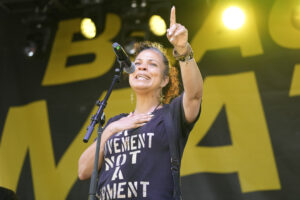
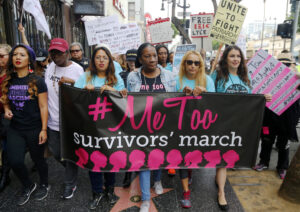
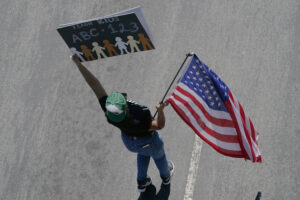
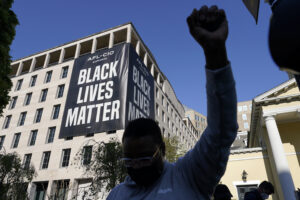
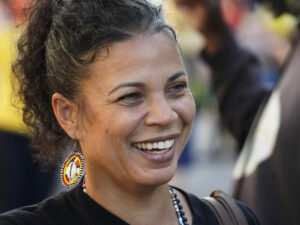


You need to be a supporter to comment.
There are currently no responses to this article.
Be the first to respond.